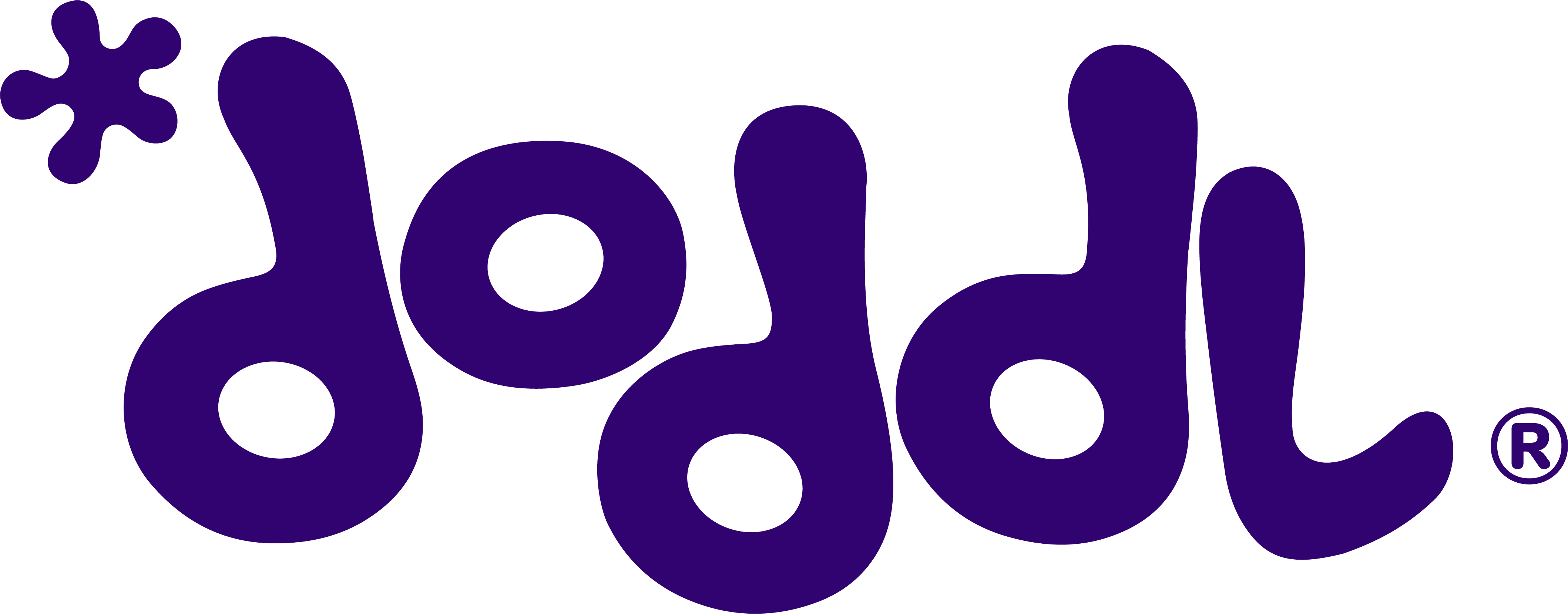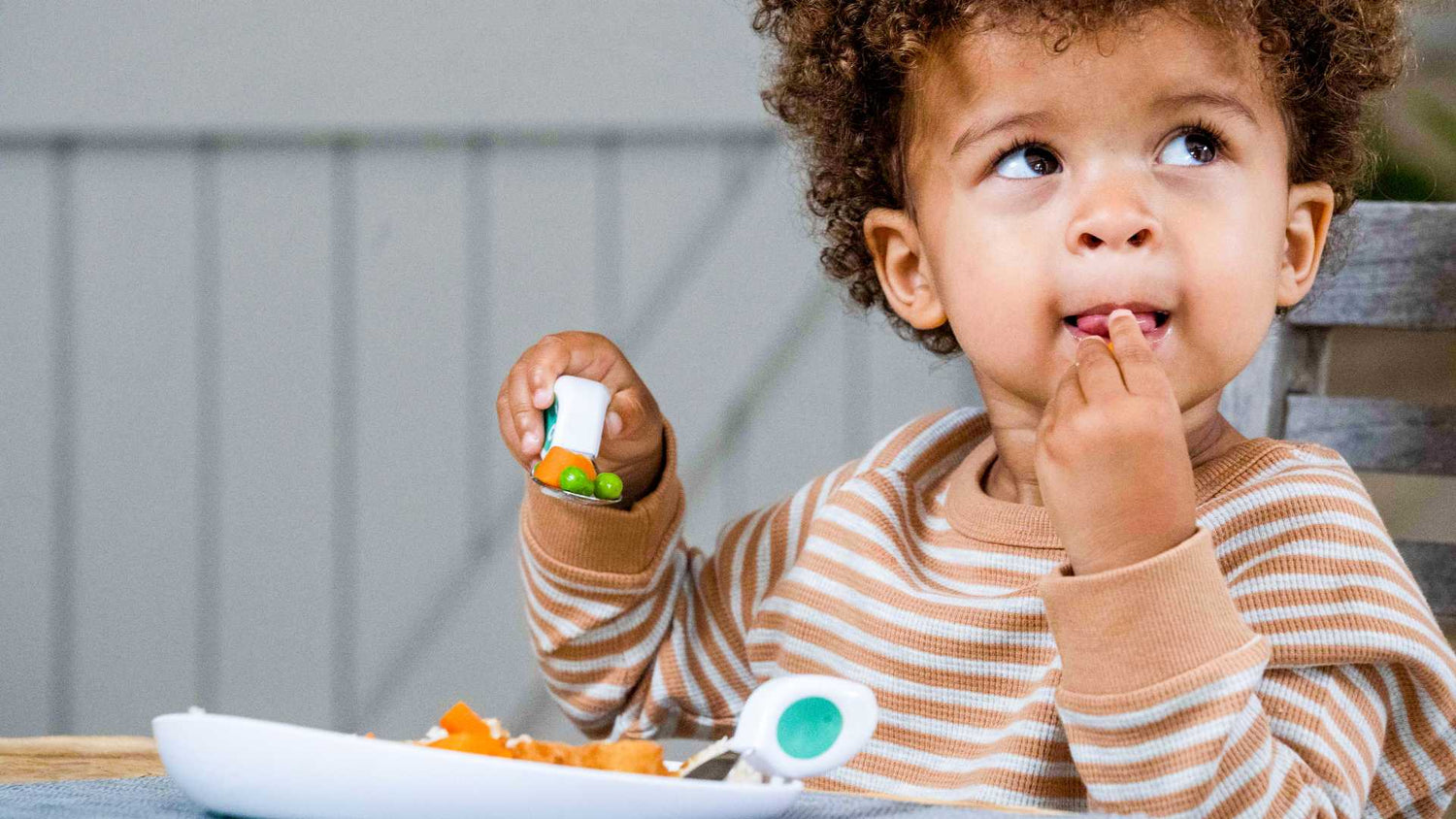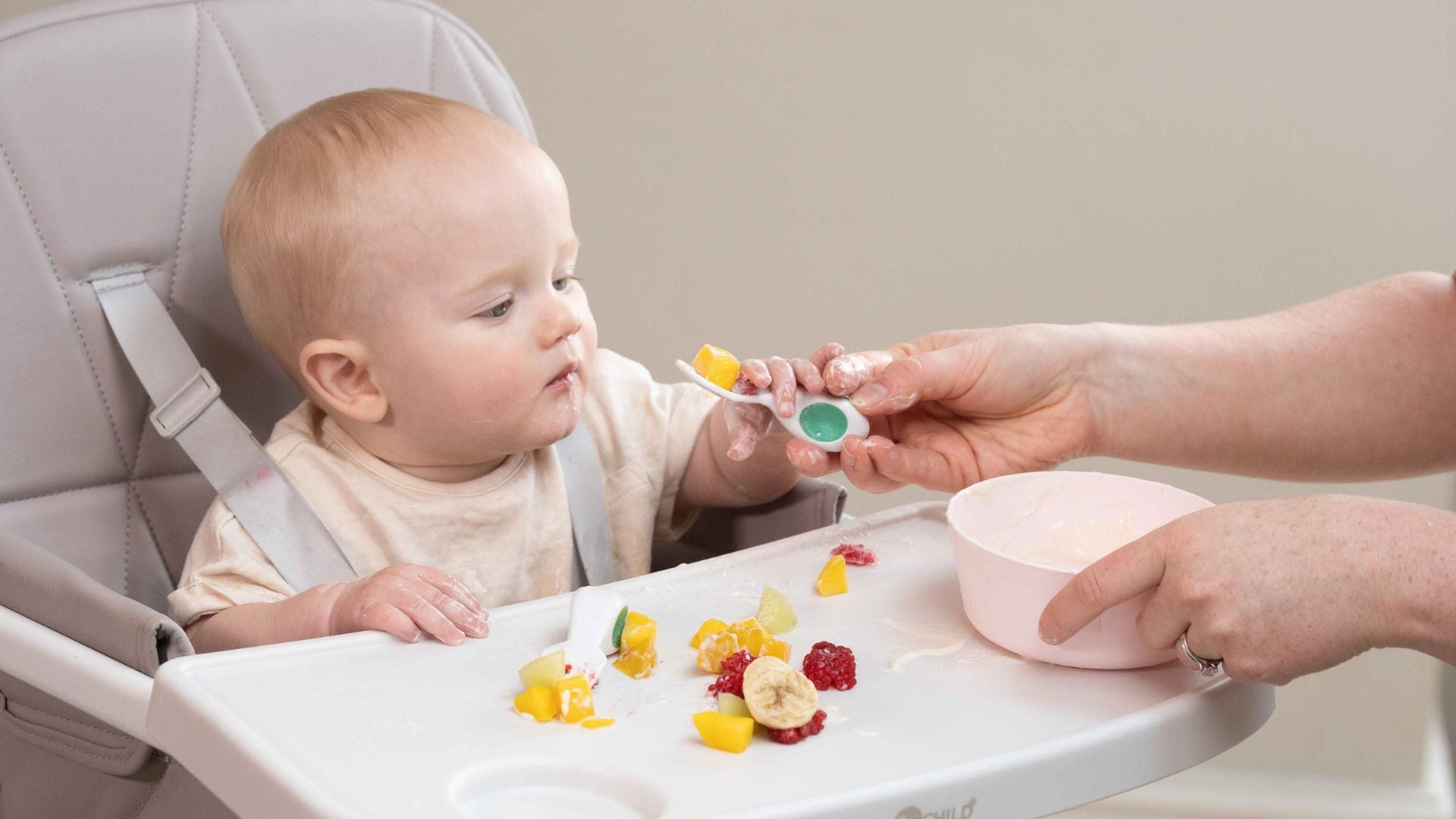As your little one grows from a baby to a toddler, their nutritional needs evolve too. But don't worry, you've got this! Just like you've been there for every milestone, every giggle, and every messy mealtime, you'll navigate this new phase with the same love and dedication.
In this guide, we'll explore the wonderful world of toddler nutrition, sharing practical tips and insights to help you nourish your growing child. From understanding hunger cues to building balanced meals, we've got you covered. So, let's dive in and discover how you can support your toddler's healthy eating habits, one bite at a time!
Understanding Your Toddler's Nutritional Needs
By now, you've likely mastered the art of nutrition for babies, and have watched your little one grow from a tiny baby to an active toddler. As they continue to explore the world around them, their nutritional needs will change and evolve too. But don't worry – we can help you to learn everything you need to support them every step of the way!
Recognising Toddlers' Hunger and Fullness Cues
Just like when they were babies, toddlers have their own unique ways of expressing hunger and fullness. However, as they grow and develop, these cues may become more sophisticated and easier to understand.
Hunger cues in toddlers may include:
- Asking for specific foods or pointing to the kitchen
- Saying "I'm hungry" or using other verbal cues
- Getting cranky, irritable, or whiny
- Putting objects in their mouth or chewing on their hands
- Showing an increased interest in food or mealtime activities
On the other hand, fullness cues may look like:
- Pushing food away or turning or shaking their head when offered more
- Saying "no" or "all done" when asked if they want more
- Getting distracted or losing interest in food
- Playing with their food or throwing it on the floor
- Showing a decreased appetite or eating smaller portions
By staying attuned to these cues and responding appropriately, you can help your toddler maintain a healthy relationship with food and listen to their body's natural signals of hunger and fullness. This is an essential skill that will serve them well throughout their life.
Understanding Toddler Appetites

It's important to remember that toddlers have smaller stomachs than adults, so they may need to eat more frequently throughout the day. However, their appetites can also fluctuate greatly from day to day or even meal to meal. Some factors that may influence your toddler's appetite include:
- Growth spurts or periods of slower growth
- Activity levels and energy expenditure
- Illness or teething
- Distractions or changes in routine
- Emotional states like stress, anxiety, or excitement
As a parent, you have the important job of offering your toddler a range of nutritious foods at consistent mealtimes. Allow your little one to decide how much they want to eat, and trust their instincts when it comes to their appetite. Remember, your patient guidance and loving support can go a long way in helping your toddler develop a healthy approach to eating.
Essential Nutrients for Growing Toddlers
Just like adults, toddlers need a balanced diet packed with essential nutrients to support their growth and development. Some key nutrients during toddler years include:
- Protein: Supports muscle growth and repair. Found in lean meats, fish, eggs, beans, and dairy products.
- Calcium: Builds strong bones and teeth. Found in dairy products, leafy greens, and fortified foods.
- Iron: Helps carry oxygen throughout the body. Found in red meat, poultry, fish, and fortified cereals.
- Vitamin D: Aids in calcium absorption for healthy bones. Found in fatty fish, egg yolks, and fortified milk.
- Fibre: Promotes digestive health and feelings of fullness. Found in fruits, vegetables, whole grains, and legumes.
Tip! Incorporating these essential nutrients into your toddler's diet can be easy and fun with a few simple toddler recipes and meal ideas. It doesn’t have to take you all night!
Remember, the key is to make mealtime fun and engaging while exposing your toddler to a wide variety of nutrient-dense foods. Experiment with different flavours, textures, and colours to keep things exciting and encourage a lifelong love of healthy eating!
Toddler Nutrition: Building Healthy Eating Habits

Toddler Portion Sizes and Meal Frequency
Toddlers have small stomachs, so they need smaller, more frequent meals throughout the day. Aim for three main meals and two to three snacks, offering a variety of nutrient-dense foods at each sitting.
When it comes to portion sizes, a good rule of thumb is to offer one tablespoon of each food per year of age. For example, a two-year-old would get two tablespoons of vegetables, two tablespoons of fruit, and so on.
Remember, these are just guidelines – trust your toddler's appetite and let them guide you.
Dealing with Picky Eaters
It's common for toddlers to go through a fussy or picky eating phase. They may refuse certain foods, prefer a limited variety, or be hesitant to try new things. Don't worry, this is a normal part of their development! Here are some tips to help, based on advice from the NHS:
- Your little one is always watching, so try to eat together as often as possible. Show them that trying new foods can be an enjoyable experience by setting a good example with your own eating habits.
- Celebrate the small victories. Did they take a tiny bite of that new vegetable? Time for a mini-celebration! Praise your child for their efforts, even if they only manage a small nibble.
- If your child rejects a food, don't force the issue. Simply remove the item without making a fuss, and remember that there's always another opportunity to try again later.
- Try to avoid serving meals when your child is too hungry or tired, as this can make mealtime more challenging. A well-rested and moderately hungry toddler is more likely to be open to new tastes.
- It might be tempting to use food as a reward, but this can create unhealthy associations. Instead, reward your toddler with non-food items like extra playtime, a special outing, or a big hug from their favourite grown-up (you!).
Remember, picky eating is a normal part of toddler development. With a little patience, and understanding you'll both make it through this phase with your sanity (and their appetite) intact.
Remember, it can take multiple exposures to a new food before a toddler accepts it, so be patient and keep offering a variety of healthy options. With a consistent and positive approach, your toddler will eventually learn to enjoy a wide range of nutritious foods.
Encouraging a Balanced Diet in Toddlers

To support your toddler's growth and development, aim for a balanced diet that includes a variety of foods from each food group. This means:
- Plenty of fruits and vegetables
- Whole grains like oatmeal, brown rice, and whole wheat bread
- Lean proteins such as chicken, fish, eggs, beans, and tofu
- Dairy products or fortified alternatives
- Healthy fats from sources like avocado, nuts, and seeds
Encourage your toddler to explore different flavours and textures by offering a rainbow of colours on their plate. You can also make those all-important family mealtimes more engaging by letting them choose between two healthy options or involving them in age-appropriate meal prep tasks.
Common Toddler Dietary Concerns and Solutions

Addressing Food Allergies and Intolerances
As a parent, it's natural to worry about food allergies and intolerances, especially when introducing new foods to your little one. But don't panic – with a bit of knowledge and some help from your trusty healthcare team, you've got this!
First things first, if you suspect your toddler might have a food allergy or intolerance, it's time to contact your GP or pediatric allergist to make sure your toddler is safe and healthy. So, what are some common foods that can trigger an allergic reaction? According to the NHS, the usual allergens include:
- Cows' milk protein
- Eggs
- Foods containing gluten (wheat, barley, rye)
- Nuts and peanuts
- Seeds
- Soya
- Shellfish
- Fish
But here's the thing – these foods can be introduced to your baby's diet from when they are starting solids around 6 months, just like any other foods. And if your little one tolerates them, it's important to keep them in regular rotation to minimize the risk of developing an allergy later on.
Now, let's talk about what to look out for. Some signs that your toddler might be having an allergic reaction include:
- Sneezing, runny or blocked nose
- Red, itchy, watery eyes
- Wheezing and coughing
- A red, itchy rash
- Worsening of asthma or eczema symptoms
- Swelling of the lips, tongue, or throat
- Difficulty breathing
- Vomiting or diarrhoea
If you notice any of these symptoms, especially severe ones like difficulty breathing or swelling of the mouth or throat, it's important to seek medical attention right away.
For milder intolerances, like lactose intolerance, your GP will be your guide on how to adjust your toddler's diet and whether any supplements are needed. Just remember, it's never a good idea to cut out entire food groups without getting the green light from a healthcare professional – we want to make sure your little one is getting all the nutrients they need to grow and thrive.
Managing Sweet and Processed Food Intake
While it's okay to offer the occasional treat, it's best to limit your toddler's intake of sweet and processed foods. These foods are often high in added sugars, unhealthy fats, and salt, which can contribute to obesity and other health issues.
Instead, focus on offering whole, minimally processed foods as much as possible. When you do offer treats, opt for healthier versions like fresh fruit, homemade muffins, or yoghurt popsicles. There are plenty of homemade and shop-bought options out there that are fun and fruity, without the added sugar.
Importance of Hydration in Toddlers
A key part of toddler nutrition is keeping them hydrated. It might not be the most exciting topic, but it's definitely one of the most important!
When it comes to beverages, water should be your toddler's go-to choice. It's simple, sugar-free, and calorie-free – the perfect drink to keep them hydrated throughout the day. Of course, milk and limited amounts of 100% fruit juice can also be part of their fluid intake, but water should be the star of the show.
Now, let's talk about what to avoid feeding your toddler. Sugary drinks like fizzy pop, energy drinks, and fruit-flavoured drinks can lead to excess calorie consumption and contribute to tooth decay. It's best to steer clear of these and stick to the healthier options.
If your toddler is a bit resistant to plain water, don't worry – there are ways to make it more appealing! Try infusing water with fresh fruit like berries, citrus, or cucumber for a refreshing twist.
And the adventure continues…

Nourishing your toddler is an exciting adventure filled with exploration, discovery, and (perhaps) the occasional picky eating phase. By understanding your child's nutritional needs, tuning into their hunger and fullness cues, and offering a balanced variety of whole foods, you'll be well on your way to supporting their healthy eating habits.
Remember, every toddler is unique, and there's no one-size-fits-all approach to nutrition. Trust your instincts, be patient with your child (and yourself!), and don't hesitate to reach out for support when you need it.
To make mealtimes even more enjoyable and stress-free, consider exploring doddl's range of toddler feeding products. From ergonomically designed toddler cutlery that encourages self-feeding to mess-free suction plates and bowls, doddl's products are created with your toddler's development and your peace of mind at heart.
So, here's to the wonderful world of toddler nutrition – may your journey be filled with laughter, love, and plenty of healthy, happy mealtimes!




Leave a comment
This site is protected by hCaptcha and the hCaptcha Privacy Policy and Terms of Service apply.